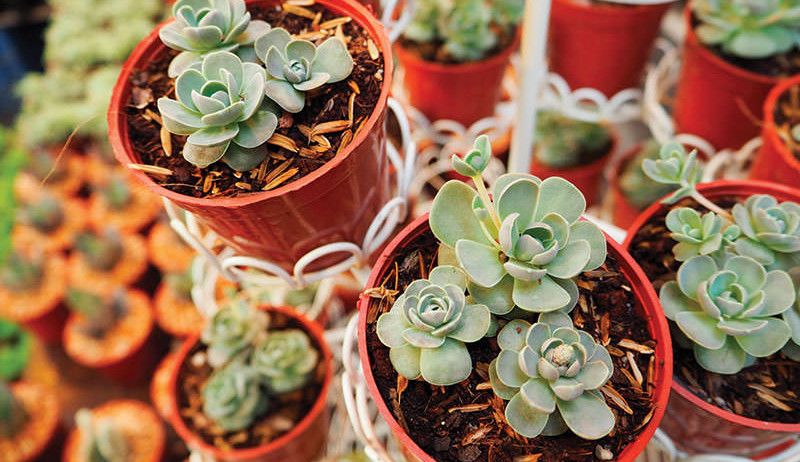
Home and business owners who seek to swap their grassy lawns for low-maintenance, drought-tolerant landscaping can provide farmers with another avenue of financial growth. It’s called xeriscaping.
Xeriscaping is a style of landscaping specifically developed for drought-afflicted areas. It requires little or no irrigation. The fundamental purpose of xeriscape designs is to conserve water. These designs also require less maintenance, decrease pollution by reducing the use of gas-powered lawn equipment, reduce or eliminate fertilizers and pesticides, and provide habitats for wildlife. All this combined makes xeriscaping appealing to residential and commercial clientele alike, especially in areas with dry climates and tight water restrictions. Plus, some states offer rebates for water-smart landscapes.
Growers can take advantage of the mass appeal of xeriscaping by propagating drought-tolerant native flowers, plants, shrubs, trees and ornamental grasses. Sell your stock wholesale to local nurseries or landscaping companies, or sell it commercially direct to consumers. When choosing species to grow, all varieties of succulents are great choices for warm climates, and they’re easy to propagate. The list of xeriscaping plants is extensive, but here are a few of your choices.
- Annuals: Cosmos, marigold, Mexican sunflower, phlox, portulaca sundial, red plume blanket, zinnias
- Perennials: Baby’s breath, columbine, crocuses, delphinium, Echinacea, iris, lamb’s ears, lavender, pansy, sages, statice, sweet William, tulips, yarrow, yellow black-eyed Susan, yucca
- Shrubs: California lilac, heather, honeysuckle, Japanese black pine, rugosa roses, sassafras, Washington hawthorne, witch hazel
- Succulents: Aeoniums, agaves, crassulas, echeveria, hens and chicks, jade, Portulaca grandiflora, sansevierias, sedum, yucca
- Trees: Acacia, amur maple, black locust, carob, common olive, common paper mulberry, eucalyptus, fig, gray birch, gray dogwood, juniper, white poplar
There is also a variety of cool-season and warm-season ornamental grasses, but species that grow in clumps are the most commonly used in xeriscape designs.
For best results, propagate and sell only those drought-resistant plants native to your region. Exotic species can be extremely invasive and damage natural ecosystems. Selling and/or introducing an invasive species is typically prohibited or restricted by state and federal laws, so make sure everything you grow is native to your area.
This story first appeared in the May/June 2017 issue of Hobby Farms.




